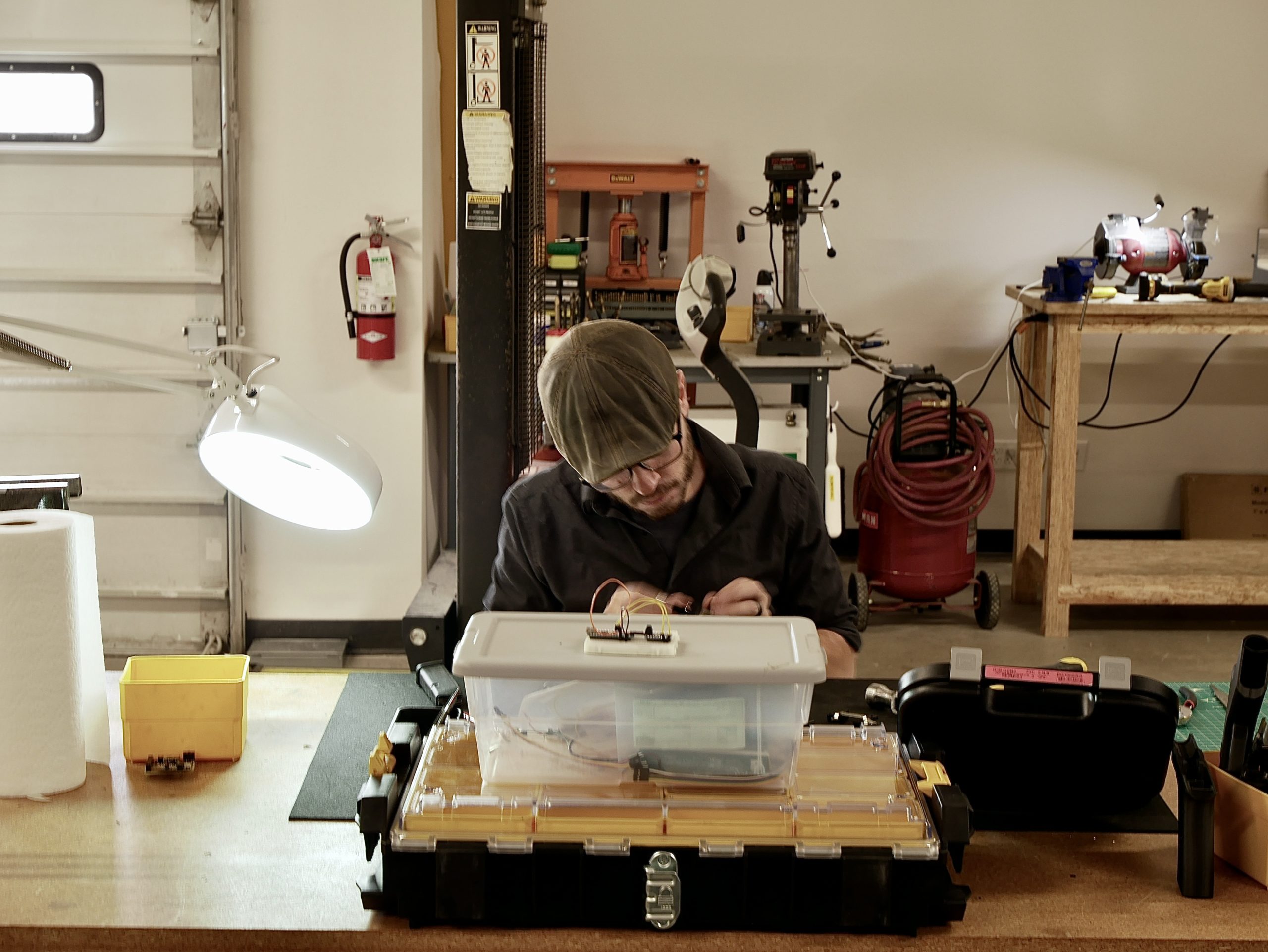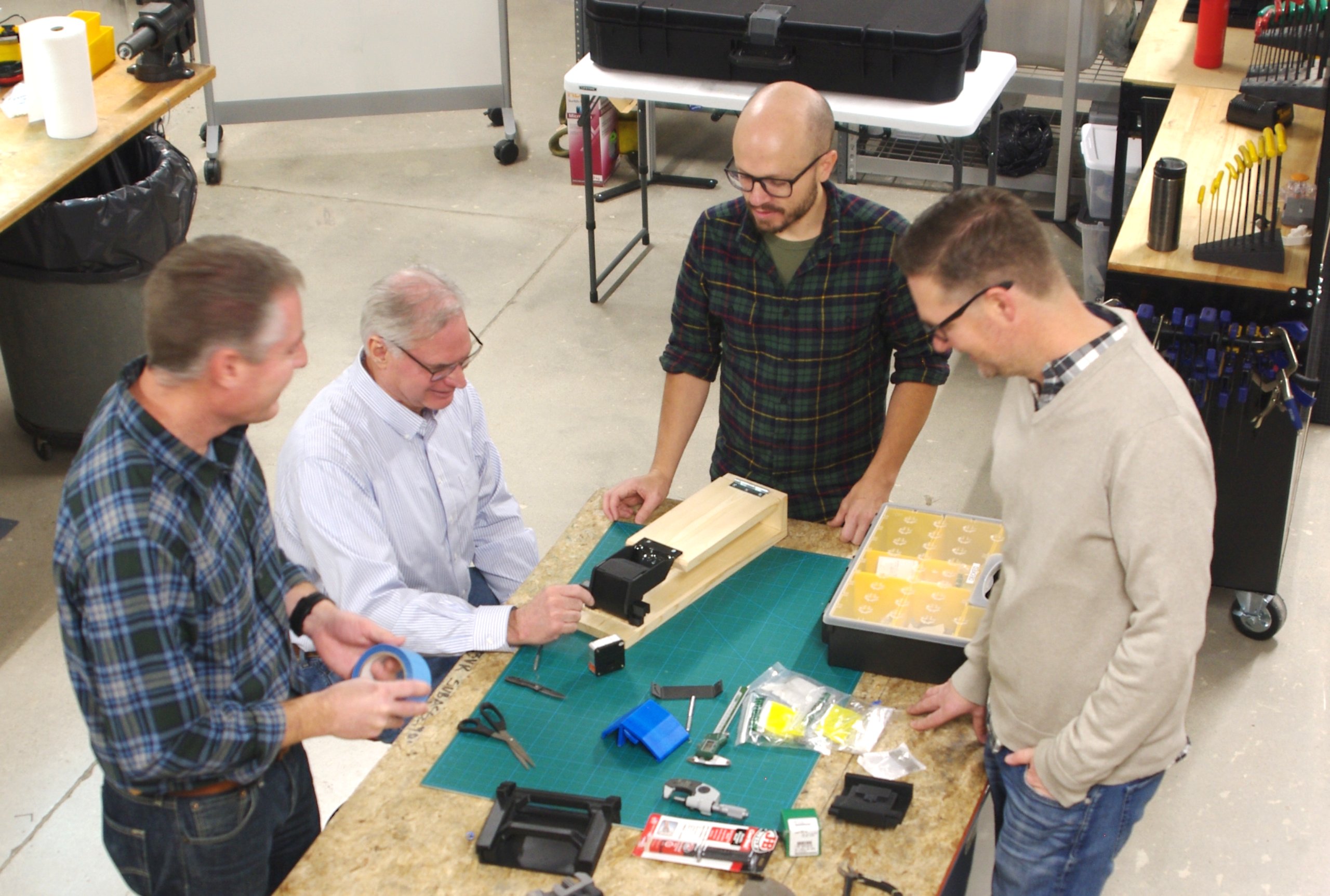We’ve come a long way since our company’s inception in 2008. What started with three co-founders and a Rolodex has evolved into an award-winning firm housing an 18-member team of talented engineers and product development experts. Our service offerings have expanded and the number of clients we’ve served has grown exponentially. Along the way, we’ve faced some challenges, but also learned invaluable lessons — about leadership, finding good people, and how to best measure success.
In a recent episode of The BigTime Podcast, SGW Designworks CEO Ryan Gray talks with host Alexander Ferguson about the formation of our business, the steps we’ve taken on our path to growth, the unique relationship-based engagement model that guides our client interactions, and why our people are our greatest asset.
Continue reading for highlights from our discussion.
On Prioritizing Our People
Many companies claim to take a people-first approach when creating their work environment and culture, but the reality is sometimes much different. For us, “people first” is more than a mantra. It guides many aspects of our business, from hiring and other HR-related matters to client interactions and how we manage projects.
“The key… is hiring amazing people. We’re not huge, but even the size we are, we have too many projects — usually 15 to 20 at a time going in parallel — for any one of us to have oversight over every one of those.
So the key is you need to have people on your team [who] you know are doing the right thing for the client, doing the right thing for the business, and are able to have tough conversations and coach, manage, and guide the clients and younger team members.
It comes down to delegation. We say, ‘Lead, Manage, and be Accountable for’ — LMA is what we call it. You’ve got to either hire people or cultivate people to be able to take those things on.”
On Leadership
“You have to provide clarity to the people you’re delegating to — which is the opposite of micro-management. They have to very clearly understand your expectations. That doesn’t mean they need to be given full-on directions on how to do something, but they need to understand whether they have free rein to go down a path or whether you expect for them to follow protocols A, B, and C in doing it, and then giving them the space to go and do their best, as opposed to being a helicopter over them.
We tried that for a while, where we would delegate but then hover, and that doesn’t work. People don’t flourish. People don’t go try things and they don’t go find their own management or leadership style, if someone, especially a co-founder, is hovering over them.”
On How We Measure Success
At SGW, our leadership team tracks several metrics to gauge our company’s success; we then review this data every week. Here are two of our most important metrics:
“Every week we have a goal of zero unsatisfied customers — and that’s a squishy thing, but if anybody is working on a project with an unsatisfied customer, that zero becomes a one and we as a leadership team are obligated to go figure out how to go fix it.
[We also assess] ‘team issue’ or unsatisfied team members. In a service business like ours, an unsatisfied team member is just as problematic as an unsatisfied client. We’ve got to be totally in step and in sync in creating an environment where our team members can do the best work of their careers every day. So that’s critical. If we have somebody who’s having a problem, they’re overworked, they’re getting burnt out, [or] they’re in some dispute internally, that’s an internal employee health issue — [a] team health issue — and we’ve got to go address that.”
We hope you enjoyed taking a closer look at what makes SGW tick — internal practices that inform our business, our leadership philosophies, and our path to success. If you have a background in mechanical design or hardware/firmware development and the values we discussed resonate with you, drop us a line. We’re growing and looking to fill a number of open positions.
Since 2015, we’ve been using BigTime Software, Inc. for time tracking, and want to thank them for inviting us to be a guest on The BigTime Podcast. You can listen to this episode of the podcast in its entirety on podcasts.bigtime.net, Spotify, Apple Podcasts, Google Podcasts, or, visit podcasts.bigtime.net.
.jpg)



